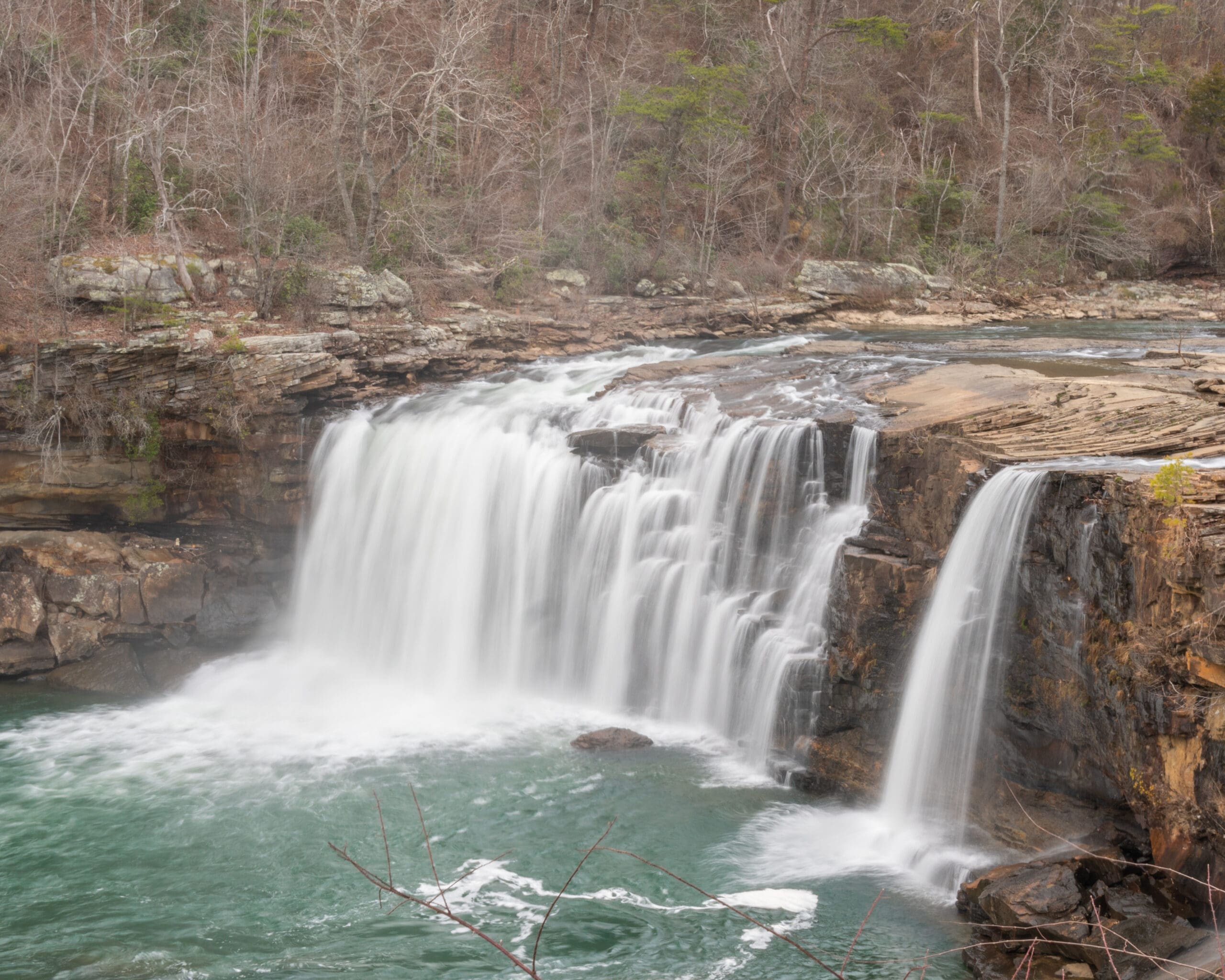This article represents the opinions of its author. The views expressed here are not necessarily representative of The Sunrise News staff as a whole.
I love the Southeast and the Appalachian region. It’s where I’ve grown up and where I’ve fallen in love with the outdoors. I mean, I most likely wouldn’t have been introduced to caving if I hadn’t lived here. But with Alabama being known for its ridges and valleys, wetlands, coastal plains, prairies, vast cave systems and endless springs, if you asked me where you could see impressive canyons, or sheer granite rock faces, I’d have said Arizona or California, not Alabama.
I’ve never been west of the Mississippi River. While I will always have a deep connection to Appalachia, I daydream about the jaw-dropping undeveloped landscapes and numerous national parks west of the Mississippi River.
If you haven’t met me yet, my name is Xander Swain and I’m an avid hiker, aspiring environmentalist and curious outdoorsman. I currently work at the Alabama 4-H Center as an environmental educator and spend my off time in the outdoors as much as possible. This series is meant to be my retelling of some of those experiences in the hopes that you, the reader, may catch the nature bug and go explore the outside world just as I do. For those who have met me already, welcome back to the Longleaf Hiker!

The connection I have not just to the Southeast but, more specifically, to Central Alabama, tells me that there just aren’t as many drastic, seemingly alien natural features that you might see in Sequoia National Park, or Yellowstone National Park.
I mean, my roommate talks all the time about how he wishes Alabama had the mountains and rocks that the Rocky Mountains have. Of course, we both may be biased and it may sound like I’m punching down on the southeast, but it’s just the comparative natural geography of the West Coast versus the Southeast.
However, one of my main goals with this series is to emphasize that Alabama has just as many wild and impressive natural wonders as other states in the U.S. Everyone has their own personal connections to the outdoors. If you live in Alabama, the southeast or find yourself visiting Alabama, I want to share with you a place where you can find and explore those connections.
For me, a connection to a place, or a personal connection with a location is the relationship that you build and maintain with the geographic, historical, environmental, social and personal aspects of a place. This article is focusing on some of my individual relationships, but a connection to place can also be between different communities or social groups and the specific area. Searching for the meaning of connection to place is ultimately trying to answer the question, why does this place matter?
That’s why when my friend Grayson mentioned Little River Canyon, I got curious. Located in Fort Payne, I’d somehow never heard about the National Preserve despite driving through who knows how many times and caved in the general area at least twice. After looking up the canyon and seeing the vast waterfalls that dot the river, I was convinced to make the trip.
The scenic views and natural geography you can spot along the canyon and river are why the National Park Service designated the area as a National Preserve in 1992. But not only is the canyon dotted with unique biodiversity, endangered species and rich natural history, the NPS also encourages the awareness of Little River’s cultural history.
This trip was planned on a whim. It was out of a mixture of boredom, opportunity and really just having the day off from work. My roommates and I wanted to do something that day, so we decided it would be a good day to hike despite it looking to be miserably chilly and gloomy all day. We asked Grayson if he wanted to tag along and the trip ended up being me, Grayson, and three of my roommates.
All of us work together at the Alabama 4-H Center as educators, so it was a nice time to be together to enjoy the outdoors, outside of the atmosphere of teaching kids and adults about the natural world. I love my job, and I know all of my friends love their jobs, but it’s nice to be outside purely to enjoy nature rather than to teach about it. Although, we typically end up taking turns vomiting random bits of information at each other anyways.
Getting there was only about a two hour drive from Columbiana, Alabama. Northern Alabama is littered with scenic views and outstanding hikes, and while I wish it was my backyard, I’ve gotten used to the typical two hour drive. From Columbiana, the drive was beautiful, with the majority of the trip snaking through county and state roads rather than the interstate.
We kept pretty entertained during the drive by playing a game that Hannah, one of my roommates, explained to us. The game is called Snap, Zip, Marbled Orchards. It’s pretty straightforward. The first people to see a dog and say snap, see a horse and say zip and see a graveyard and say marbled orchard gets points. Snap and zip are worth one, and marbled orchard counts as five. First to ten wins.
You can also add other sights and sayings to get points; Erika, another one of my roommates, added a rule to say vroom vroom for rusted and busted up cars. We kept ourselves busy for the whole two hours and now, every time since, when I’m in the car, I catch myself playing the game.
Overall, the drive was fairly straightforward. When we got closer to the preserve it was mainly windy country roads, so be sure to look out for wildlife around corners. At one point we saw an armadillo on the side of the road and one of my roommates, Robbie, made us stop to take a photo.
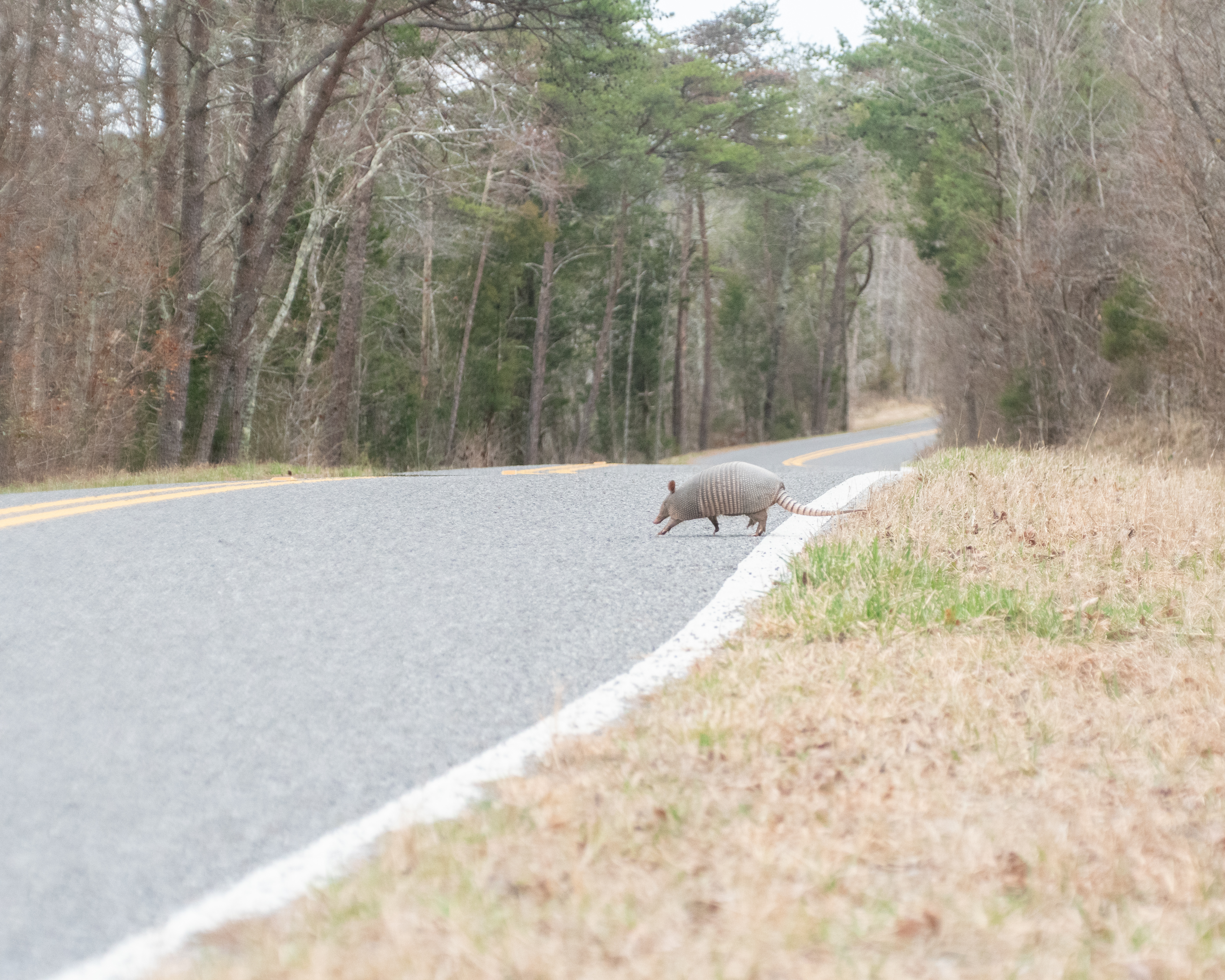
Arriving at the Little River Canyon parkway, our first stop was Canyon View Overlook. The parkway follows the canyon and is a gorgeous drive even if you don’t want to stop at one of the many overlooks. We drove to the parkway from Co Rd 255 and the Canyon View Overlook ended up being the first point of interest we spotted.
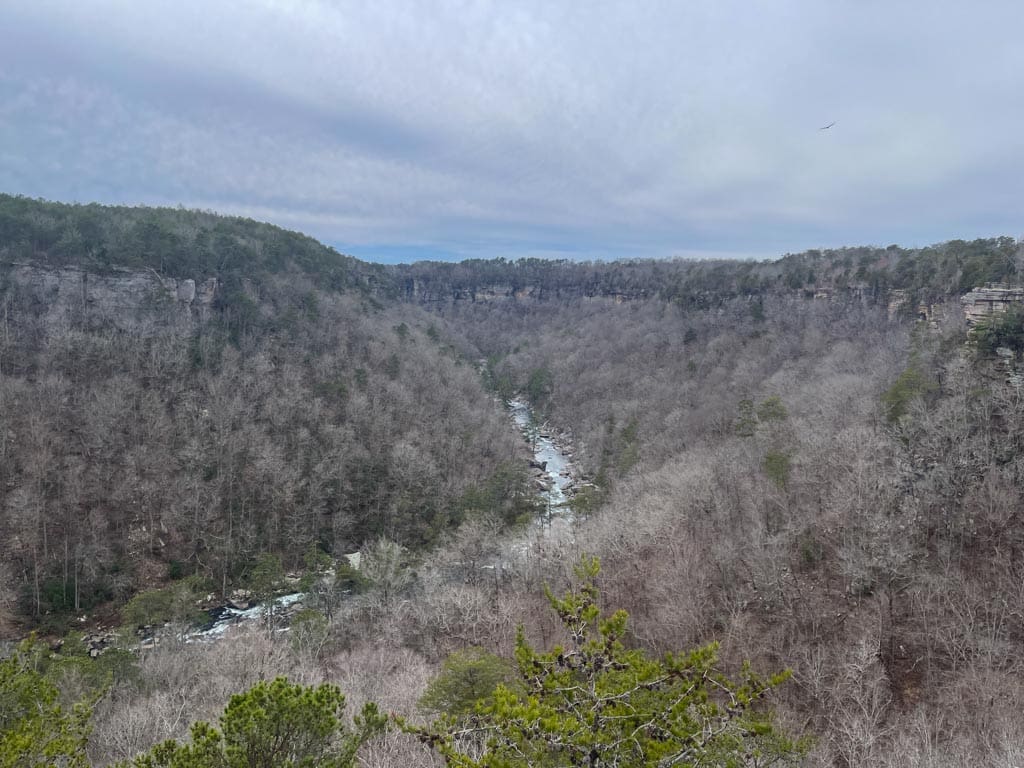
The overlook was beautiful. Dotted with vultures riding thermal winds and the occasional song bird or bird of prey, the canyon seemed to stretch endlessly. Looking to your right you can spot a second overlook, the Wolf Creek Overlook. When we arrived, we also noticed someone had set up a rappelling anchor for canyoneering. I had thought canyoneering was, again, really only popular out west.
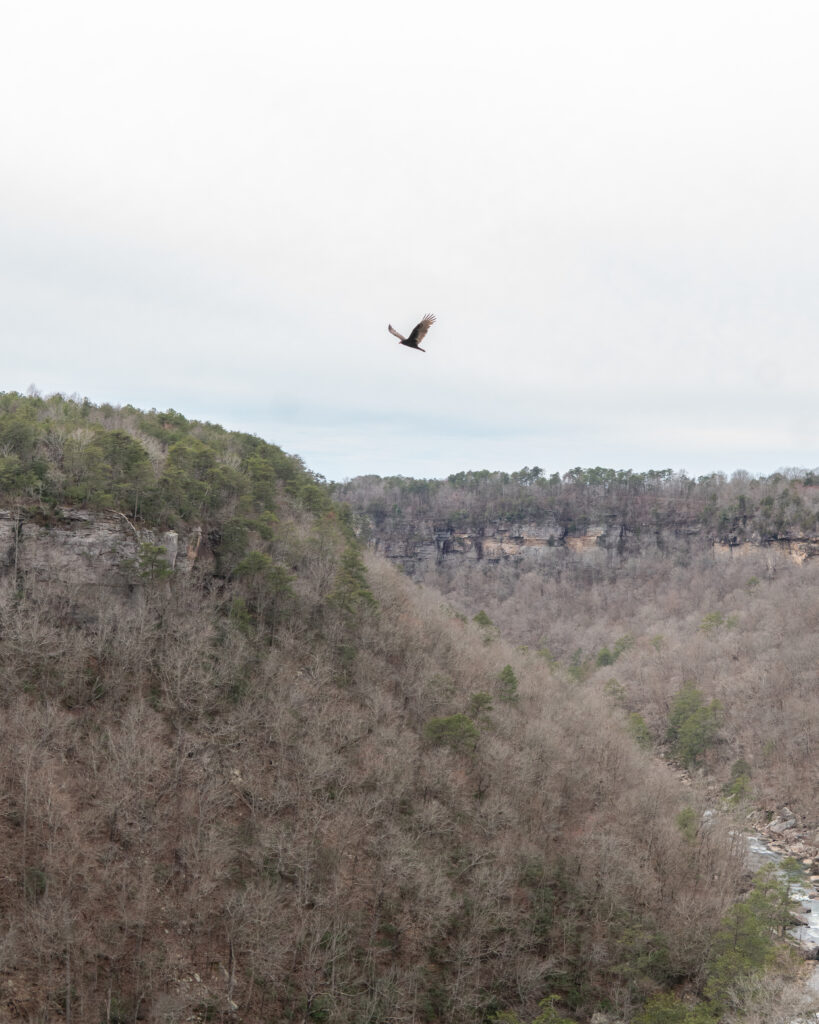
After taking some photos, Grayson drove us towards our hike. We skipped past a few overlooks we hadn’t noticed until it was too late, drove past Mushroom Rock, where we’re pretty sure you can boulder, then stopped at Little Falls Overlook.

At the overlook, we found our first glimpse of the ironically named Little River Falls. The river may be little, but the waterfall is not. As tall as a four story building at 45 feet, the waterfall is the main attraction of the area. While the overlook gave us an excellent view of the waterfall, we wanted to be closer, so we left the overlook and made our way to the Little River Canyon Falls Park parking lot.
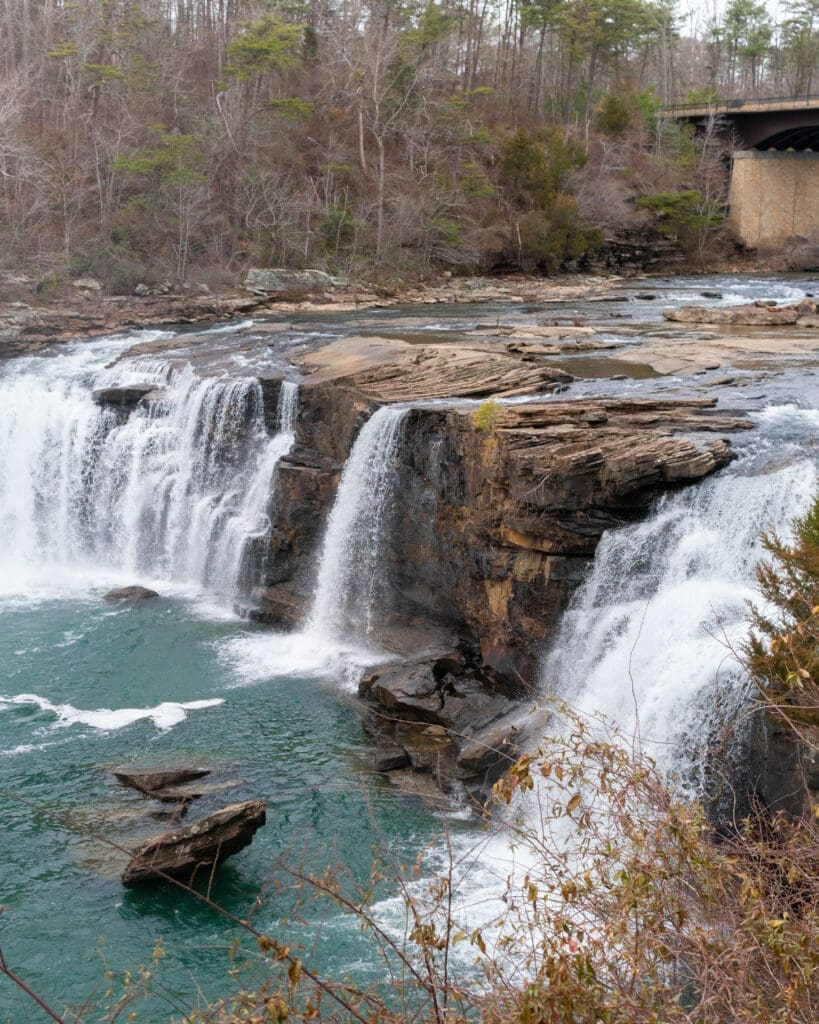
The parking lot is massive. The trail, not so much. It’s only a 1.5 mile trail down and back and is great for beginners. Coming down the path, it forks into the main Little River Falls boardwalk to the right and to the left, Little Falls trail. We took some more photos of the waterfall, read some signs and decided to get on the trail to the water.
The trail was pretty straightforward until the end as it’s well-maintained and fairly level, that is until the last portion. If you need a break, I recommend one because at the end of the trail is a steep sandstone staircase that takes you directly to the edge of the water. The steps aren’t massive and are maintained well, but we all had to take a few breaths at some points.
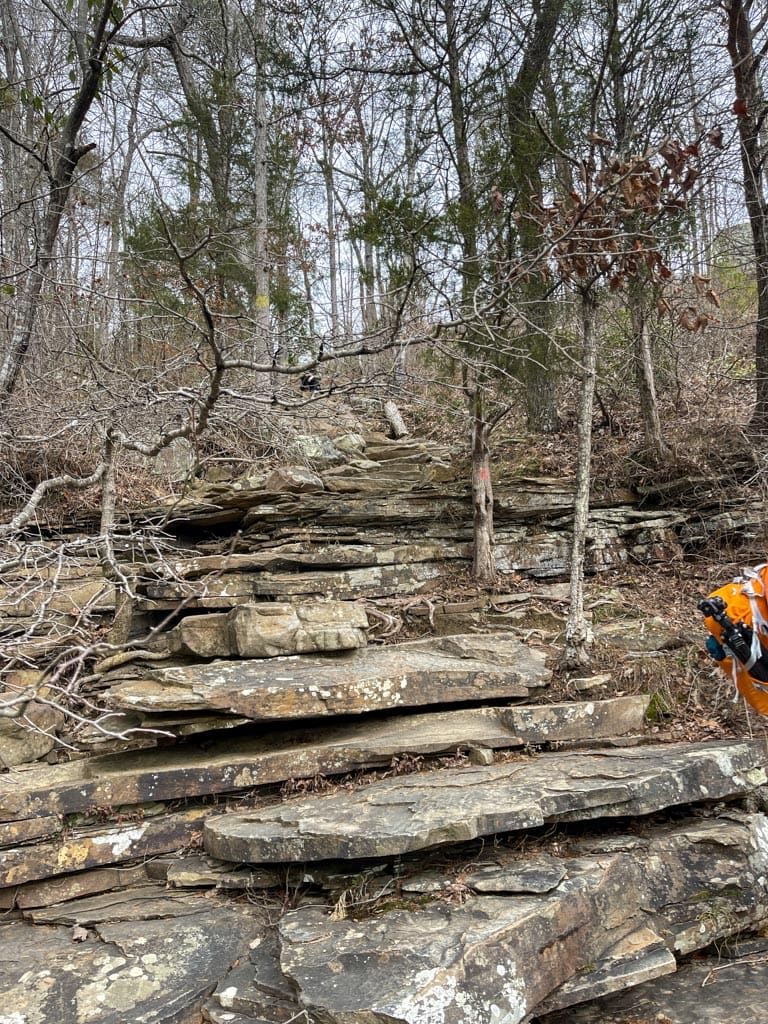
As we came down the 137 steps, the treeline opened up to the river flowing in from your right and rolling into some light shoals and waterfalls to the left. Almost directly in front of us there was a massive boulder sitting in the water.
Robbie and I immediately looked at each other and started taking off our shoes and socks to wade across the three to four feet of water to get to the boulder.

It was a lot easier to climb up than we thought. After getting to a log, it’s just a few high steps and mantling to the top. If you don’t feel comfortable or if the water is high I would not recommend doing this in hindsight. Little River can also have pretty intense rapids, so be sure to exercise the most amount of caution near the water.
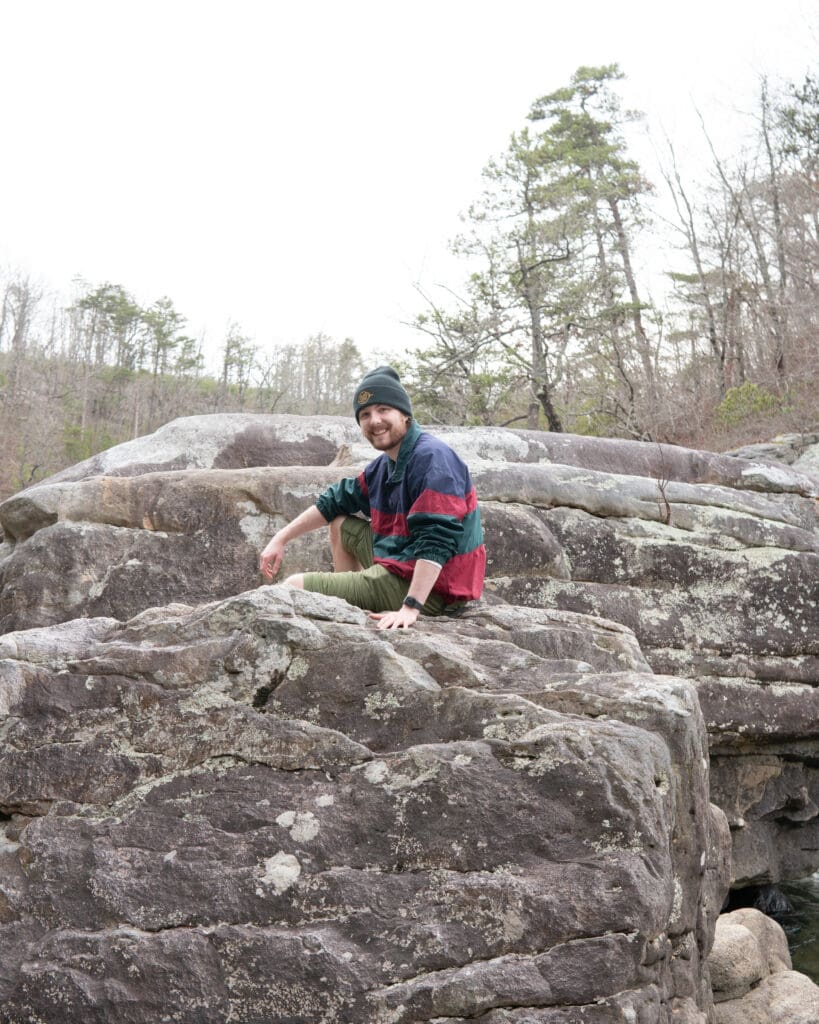
After getting to the top we enjoyed the peacefulness. The different perspective and satisfaction of climbing something with my friend gave me a new appreciation for the hike.
I’m not sure if I enjoy the places I visit or the memories I make with the people I visit more. They both contribute to the connection and relationship I have with the outdoors. I know nature’s solitude is a powerful force, but I’d argue that the personal connections you form between yourself, the outdoors and people close to you are just as powerful.

After our time on the boulder we joined the rest of our friends at the waterfall towards our left. It was another moment of silence with my friends as we took in our surroundings. I’m not sure how much time we spent in the area, but eventually, we headed back.
Getting back was going back the way we came, and after a brisk walk and getting in the car we decided to stop at another overlook before it got dark. We settled on Wolf Creek Overlook, to the opposite of our first stop, Canyon View. Overall, I believe the overlooks and trails are a must-see. I won’t be surprised if I find myself at Little River in the summer and fall to see some more of the preserve’s unique scenery and biodiversity.
On our way back home we were contently exhausted. At some point, though, someone asked why Fort Payne was called Fort Payne — where’s the fort? What was the fort for?
We googled it, and learned some history.
In the middle of the Fort Payne township, about a 15 minute drive from Canyon View Overlook, we ended up finding the NPS Fort Payne Cabin Historic Site. The original chimney is still standing and has educational information about the local area, including archeological digs. I highly recommend stopping at this site, it’s a highly educational stop to learn, and to see a harrowing part of U.S. history.
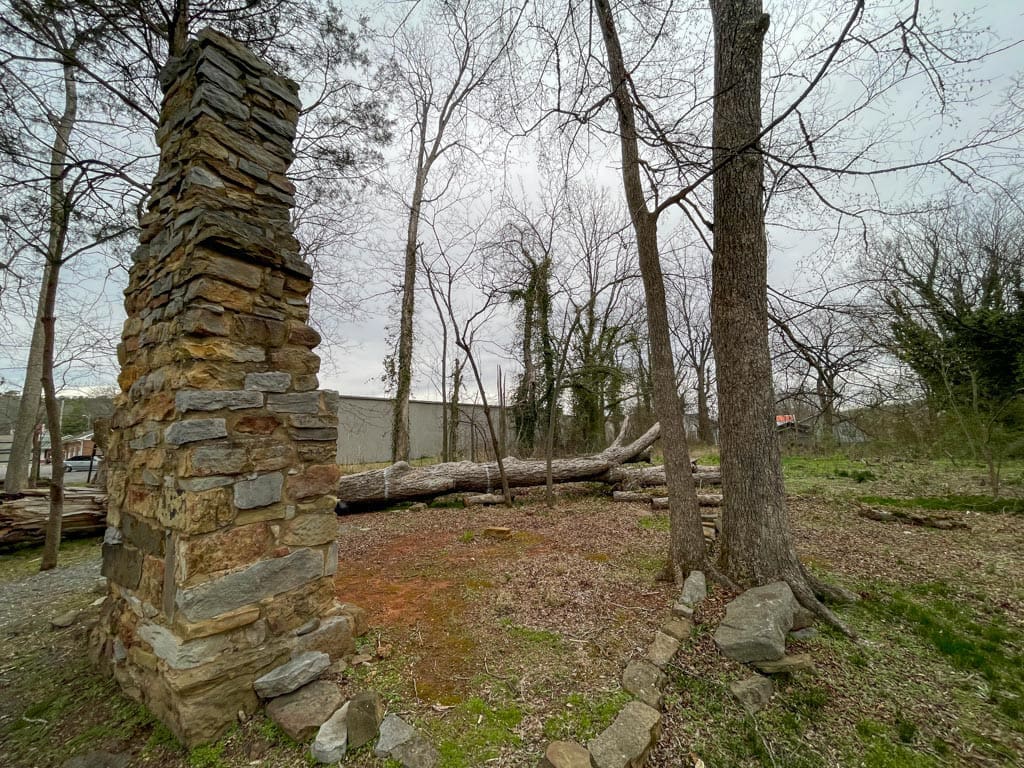
We also learned that Little River Canyon is the sole location in Alabama where the Trail of Tears began. In 1838, U.S. forces gathered 1,100 Indigenous men, women and children to begin the forced removal of many of the tribes in the area from their homeland. Fort Payne was one of the spots for the gathering. They crossed Little River in 1838 as they made their way to Oklahoma. Fort Payne is also the site where the U.S. military took homes from the local Cherokee tribes to create the fort.
Knowing the history and importance of Little River Canyon made me appreciate my connection to it even more. I believe that cultural history is just as important as the natural geographic features and biodiversity when appreciating any location. We weren’t the first people here, and we won’t be the last. It’s of the utmost importance that we treasure our natural sites while remembering those before us. Without remembrance, and without conservation and preservation of our history, we truly cannot appreciate the places that we exist in.

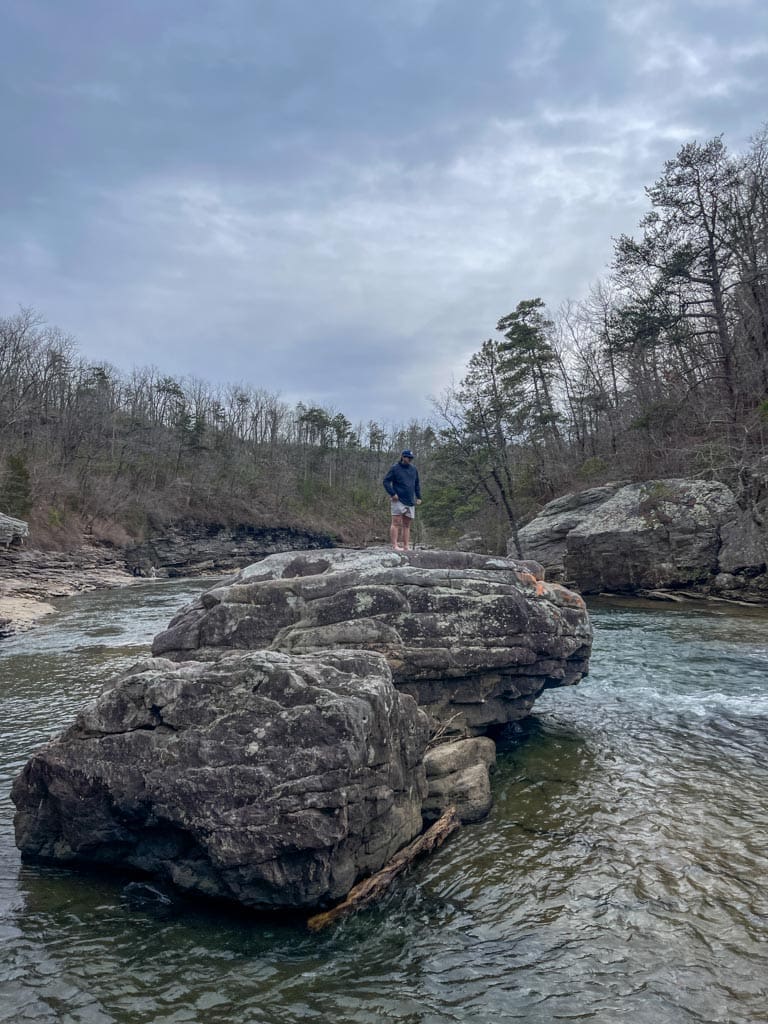
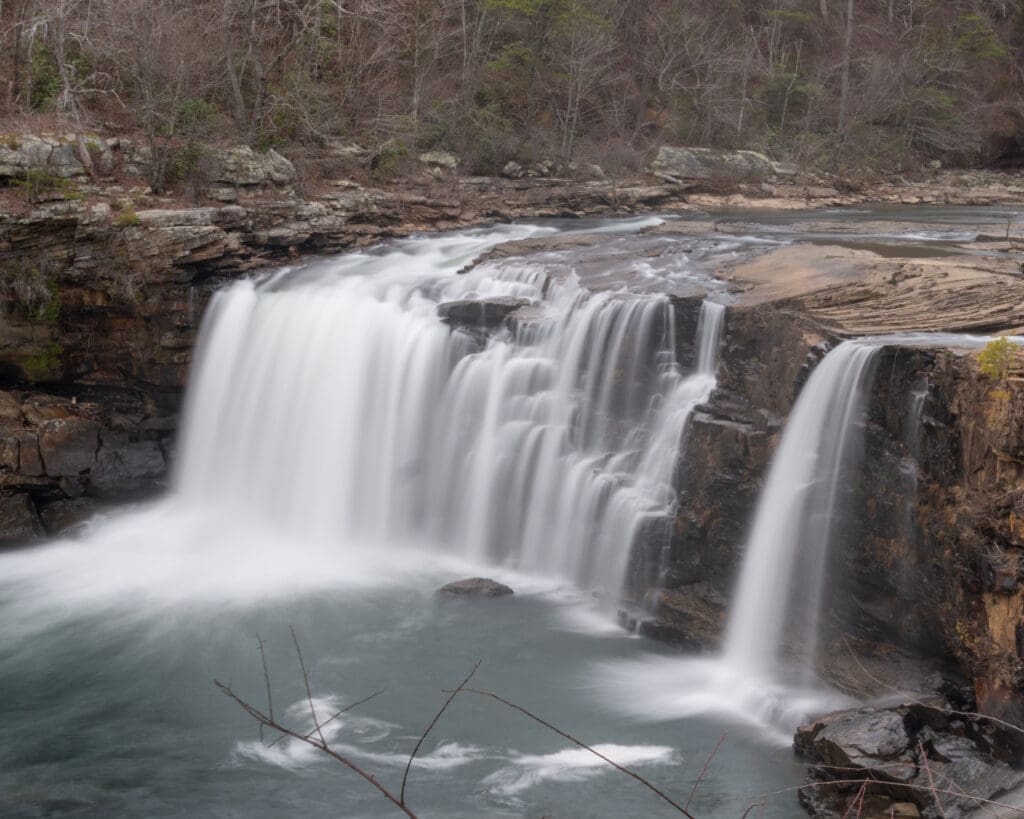
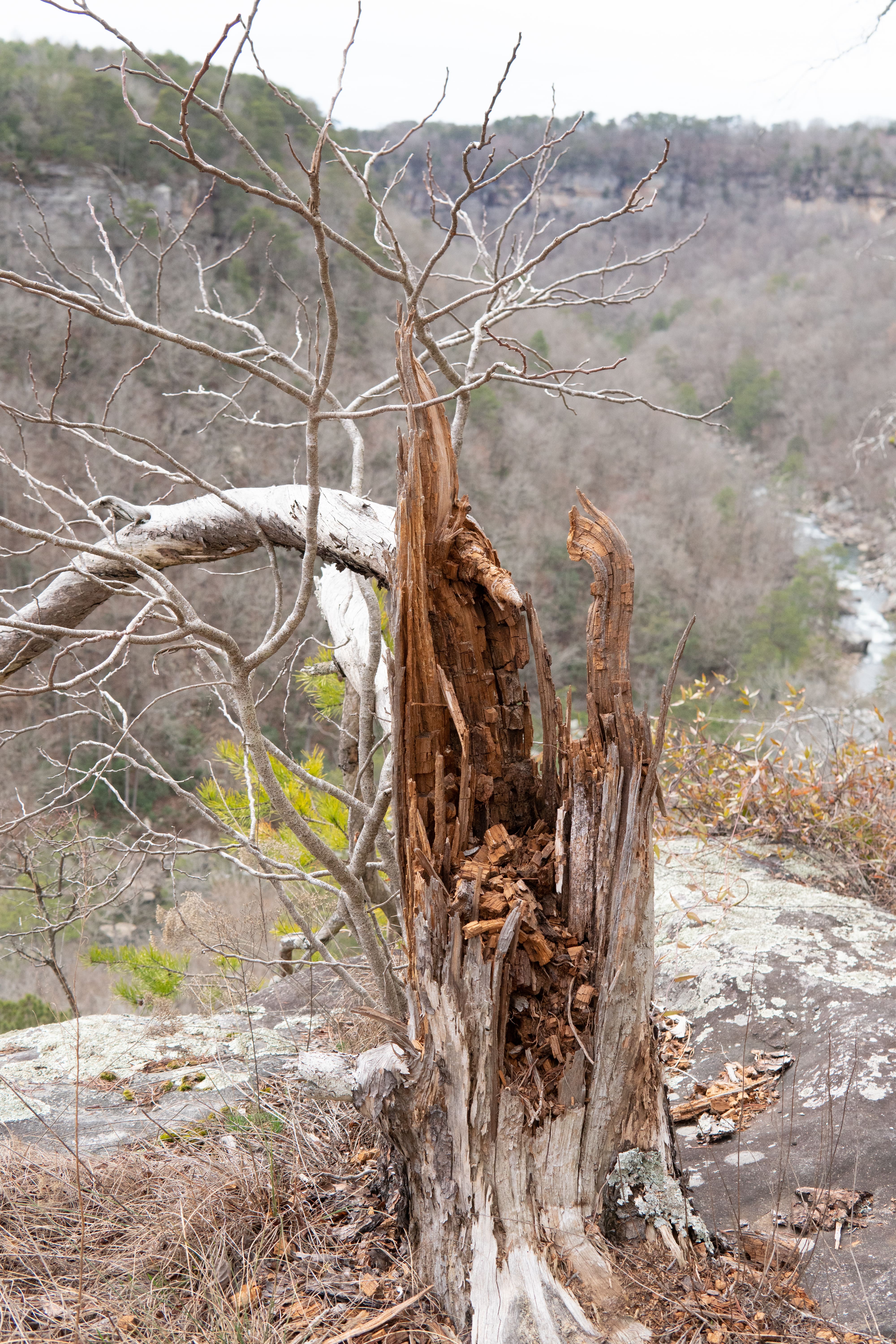
This article represents the opinions of its author. The views expressed here are not necessarily representative of The Sunrise News staff as a whole.
